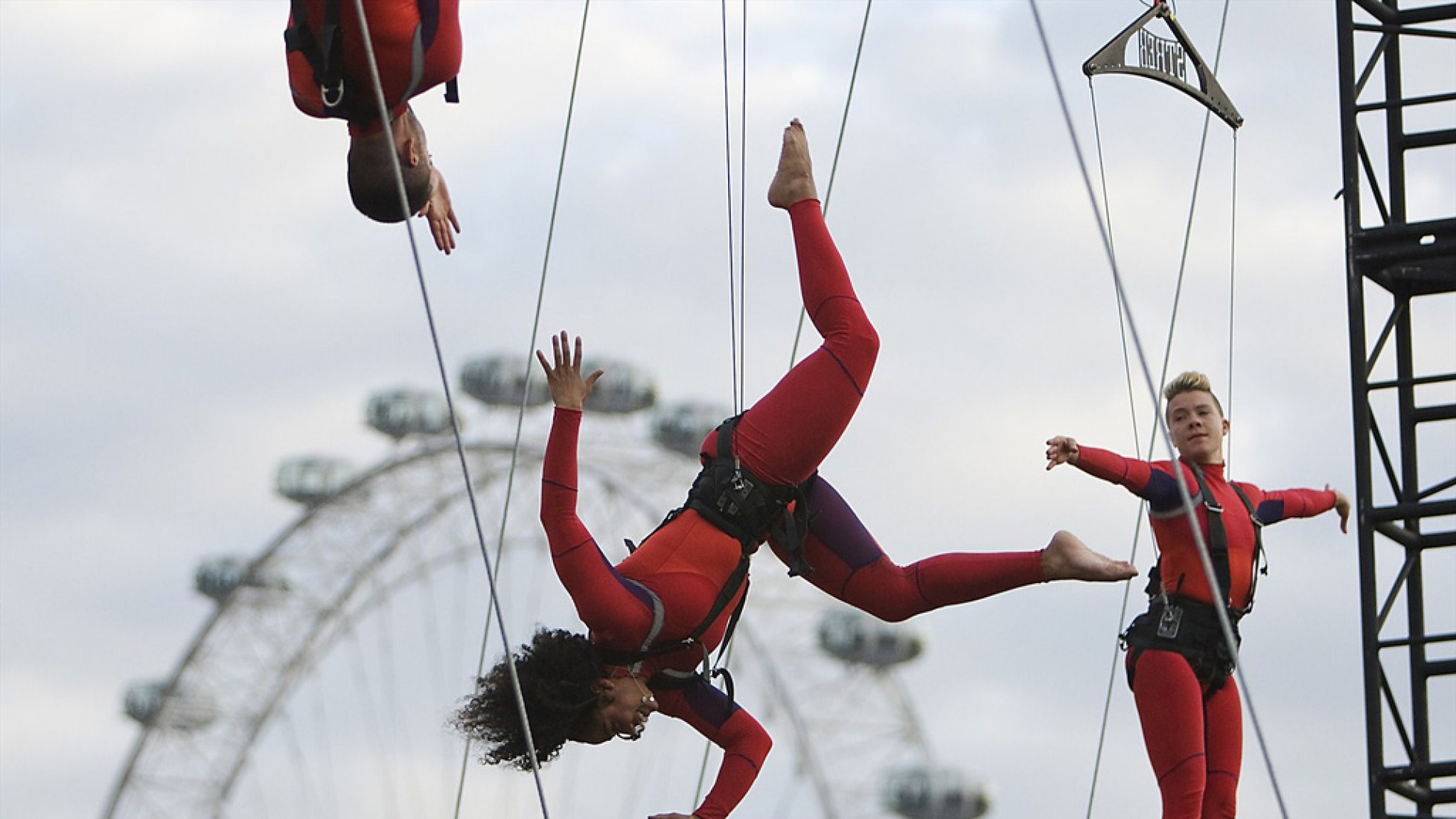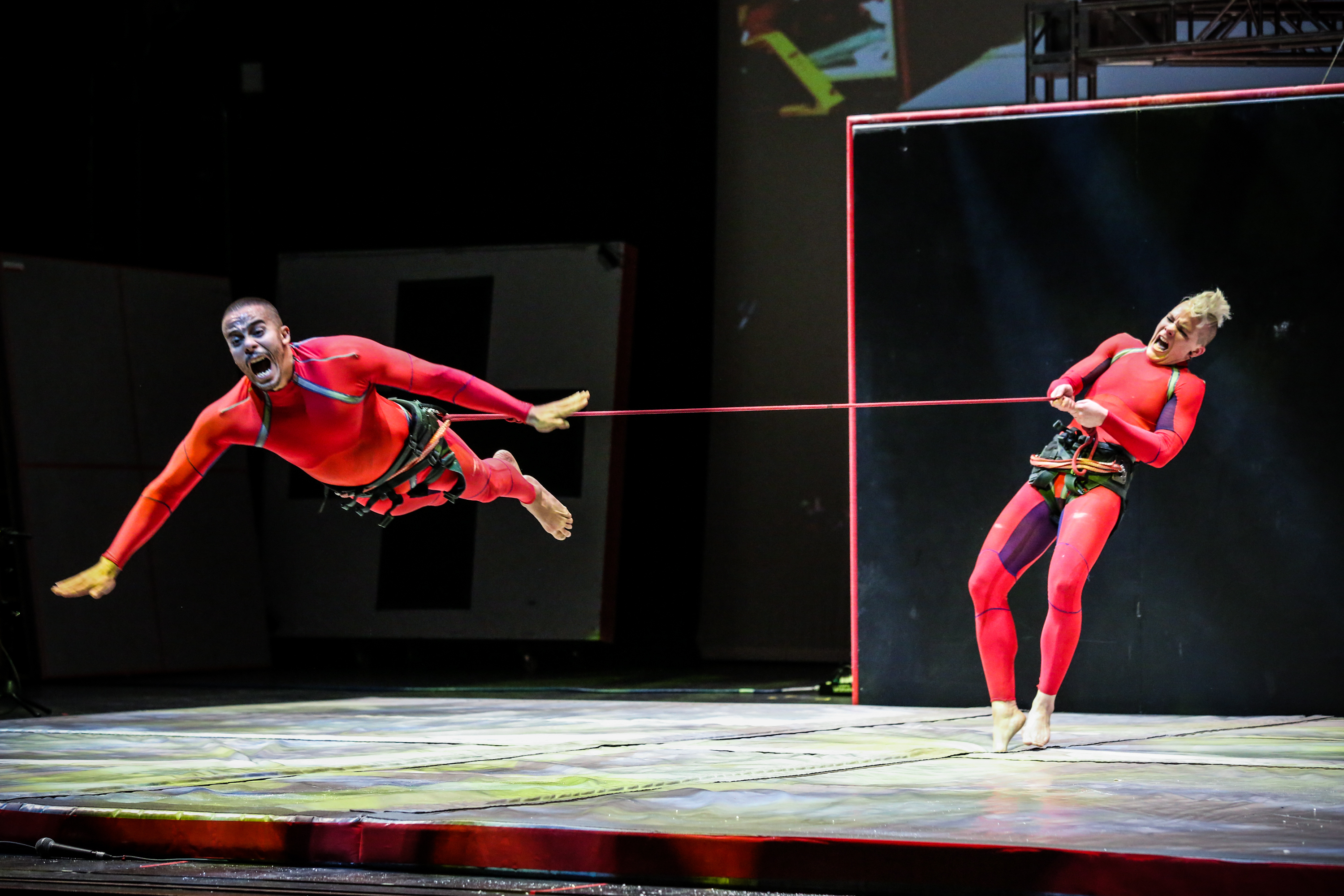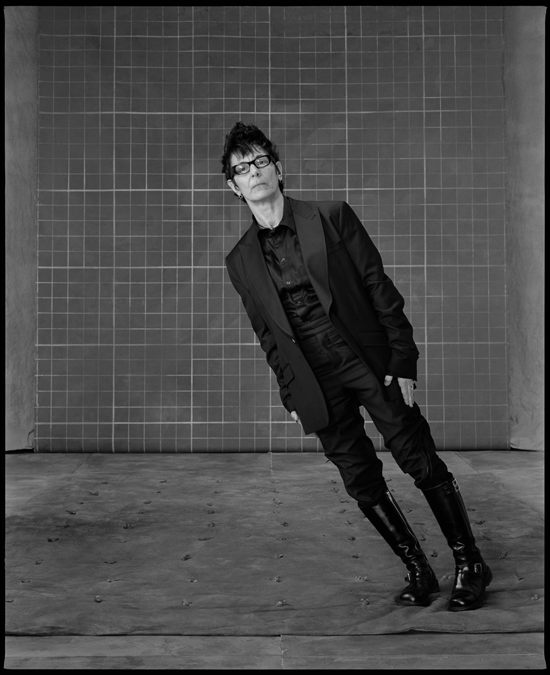– What do humans have to do not to have regret at that last second before we die?
That is one of Elizabeth Streb’s moving questions for art and dance. Streb is known for her great performances that make guttery sounds, give chills, where dancers or superheroes, as she calls them, work with gravity instead of pretending it does not exist. So they fall. It hurts and that makes a loud noise. But, as she puts it, it is a badge of honor in getting hurt and going on.
In 2012, she displayed giant public performances in London’s most notable spots during the Olympics: the London Eye, the City Hall and Trafalgar Square. She aimed at provoking physical sensations and life-memorable imprints of the performance on the public — “a phenomenological event”.
We fly, but we land. A metaphor for the ups and downs of life, where action and risk are a part of experiencing existence. Can risk ever be planned? … Isn’t risk something that doesn’t occur to you ever to do? As framed in openDemocracy’s article ‘Performing beyond the gendered zombie economy‘, Streb provokes us to think about how bodies, including our own, move through the world and generate new ways of being – how bodies, thus, enact gender, risk, and the economy.
In regards to gender and gendered lives, risks apply to the existential search we experience to discover different forms of political freedom to exist and relate to others that destabilize the nature of lives under normative frames. Fear for Streb is knowledge, is one more information to process, to feel and to know what is still missing — and we do that, by excellence, with our bodies.
To evoke Judith Butler, when she addresses gender theory:
it opens up the possibility for young people to find their own way in a world that often confronts them with narrow and cruel social norms. To affirm gender diversity is therefore not destructive: it affirms human complexity and creates a space for people to find their own way within this complexity.
And evoking Derrida’s reference to reliability in a wide sense, more than just a body, an adornment or a decoration form — references she uses for traditional dance — Streb uses the body and machinery to become not just an object but a form of exploration where confidence and, in this case, others — machine and other people — are crucial.
Another aspect we can observe from Streb is the reliability of others. Teamwork, alliances, “people who love people” are inherent to the risky endeavor. As is for the resistance work we are propelled to do. Resistance demands us to take risks, to jump without flinching, to have that drive for not having regrets in order to be on the streets, to perform gender or genders, whatever they may be.
Learn more about Elizabeth Streb and the Streb company:
Interview with Elizabeth Streb: Dancing With Danger – PBS
Born To Fly: Elizabeth Streb vs. Gravity
Elizabeth Streb: On Taking Big Risks & The Power of Action – 99U




